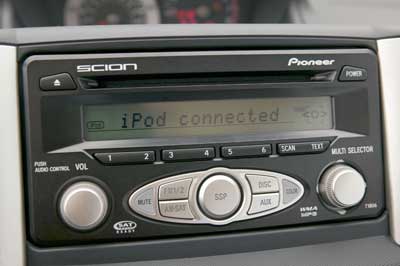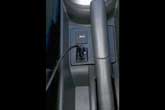Recent Articles
Popular Makes
Body Types
How to iPod Your Car
Say goodbye to the radio, say hello to mp3

You have an iPod full of tunes, but between family time and work – not to mention other activities – you’re finding it virtually impossible to actually listen to the thing. Fact is, the perfect time to listen to your iPod is while you’re driving. As commutes to and from the office grow and our lives become more hectic, the time we spend inside our vehicles increases, as does the value of making that time as personally fulfilling as possible. After all, sitting in traffic would be so much more fun if we could only do it to our own personal soundtrack. But we can – and it’s getting more relevant every day. Gone are the days when radio stations dictate our in-vehicle entertainment; even CDs are quickly going the way of the eight-track tape. According to a recent Autobytel survey, more than 80 percent of those who took the poll either had an iPod or knew of a family member who had an iPod. Of those, 30.7 percent claimed to have been able to use an iPod inside their vehicle. And according to the Consumer Electronics Association (CEA), more than 152 million Americans – about 70 percent of the total U.S. adult population – own portable entertainment devices. On the vehicle front, MP3 capability has increased more than 1,200 percent as a standard feature since 2003, appearing on more than 320 vehicles in the 2006 model year – versus only 25 in 2003. In total, 598 current vehicles include MP3 player capabilities as either a standard or optional feature. For those who don’t know the difference between iPod music and MP3 music, it’s easy: there is none. It’s all about MP3, the music format, while iPod is just the delivery mechanism and iTunes the software used to load, purchase and play your MP3 files. The message is clear: You’re sick of homemade CDs, talk radio and commercials. You want to get your iPod hooked up to your car, and you want to do it now. When choosing a way to do so, the main thing to consider is how to transfer your iPod’s audio signal to your car’s stereo receiver. There are three basic methods from which to choose; the best one depends on how much you want to spend and how much sound quality you’d like transferred from the iPod to your car’s stereo.
How-to
How-to Just load the cassette into your receiver and plug the other end into your iPod, plug it into the adapter and – you’re ready. The biggest problem with cassette adapters is, however, the simple fact that many cars no longer have cassette players. Cassette adapters: Wired cassette adapters are the easiest and least expensive way to install your iPod, the trade-off being a reduction in sound quality, the lack of a power source, and wires sticking out of your dash. It’s ideal for travel, however, as it’s easy to hook up to a rental car. Just load the cassette into your receiver and plug the other end into your iPod, plug it into the adapter and – you’re ready. The biggest problem with cassette adapters is, however, the simple fact that many cars no longer have cassette players. FM modulators: Hooking up your iPod via an FM frequency offers slightly better sound and costs slightly more, but can be problematic in regions heavy with FM stations, and the signal will often fade. A good example of an FM modulator is the Griffin iTrip, which plugs into the bottom of your iPod and broadcasts via a weak local FM signal. This method is a good choice if your receiver doesn’t have changer controls, an auxiliary input jack, or you don’t want to take your stereo out in order to get iPod music in your car – or pay for installation. Wired FM modulators, which plug into the antenna input of your receiver, offer better sound quality than wireless modulators, though the wireless route – which transmits over a standard FM frequency – is more convenient. Auxiliary inputs and CD changer adapters: This is becoming the most popular route to take, but auxiliary inputs are either very simple or rather difficult – depending on the type of stereo you have in your car. As automakers and car stereo companies get hip to the popularity of iPods, they’re beginning to offer vehicle sound systems with auxiliary inputs located on the front of the receiver. This makes iPod integration as easy as buying an RCA cable, plugging it in and selecting AUX on your stereo. If your car’s stereo has its auxiliary input in back, however, you’ll have to take your receiver out and run an extension cable to the front. If your stereo doesn’t have an auxiliary input, you can convert the CD changer port on the back of your receiver, or it may also be in the trunk of your car. At this point, you can use the line you’ve installed like a jack, going straight to your iPod and streaming music through your speakers. Or you can step up to the real iPod experience and make it part of your stereo controls. At the cost of a $100 or more, you can purchase an iPod adapter. Plug the other end of the cable into your iPod, and find a place to mount the adapter box for ease-of-use. While this method requires significant installation effort and costs more money, the benefit is that your iPod is now integrated into your stereo controls and you’re sure to get primo sound quality. These types of adapters also provide a power source for your iPod. As iPods – indeed, personal portable music players in general – grow in popularity, automotive aftermarket companies will continue to find ways to make integration as easy as possible, and automakers will increasingly offer cars that feature auxiliary inputs in easy-to-use locations. For consumers, it’s a win-win: More choice, better music, and less hassle getting there.
Photos courtesy of Autobytel
